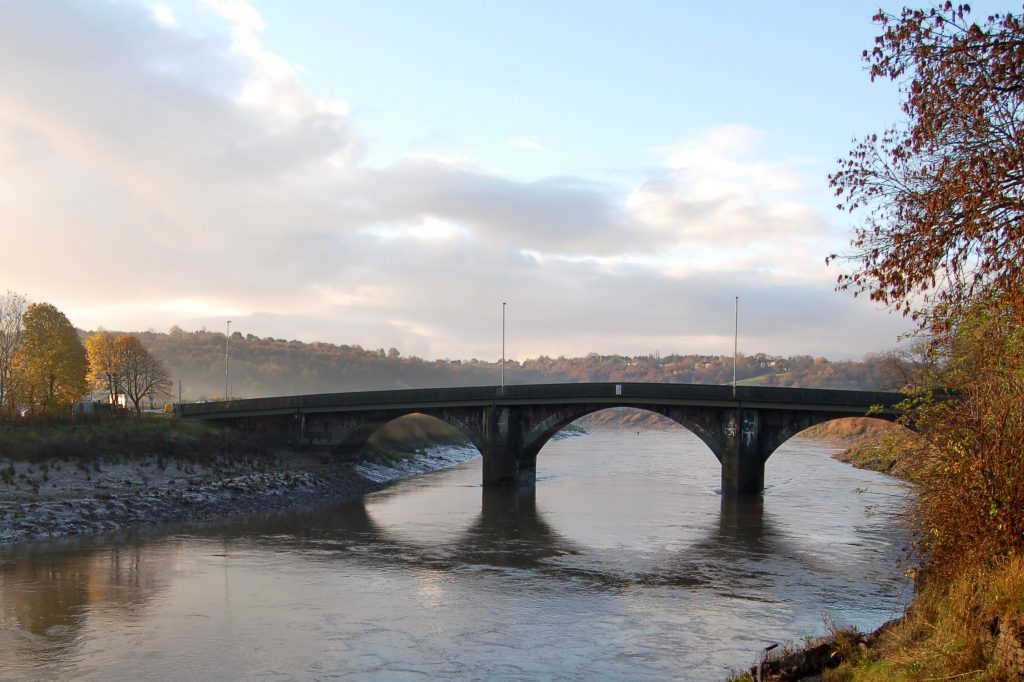Motts to conduct structural survey of 200-year-old Newport Bridge
Newport Council and Cadw (the Welsh Government’s historic environment department) have granted planning approval to Mott MacDonald to carry out structural survey work on the grade II listed Caerleon Bridge over the River Usk.
The bridge was built between 1806 and 1812 by David Edwards and is said to have been designed by West India Docks engineer William Jessop. It is made of nearly square courses of red sandstone and has three elliptical arches.
Due to his age, Motts was tasked with finding a non-intrusive way to test the bridge’s structural load-bearing capacity and determine if structural support or repair work was needed. After discussions between the contractor and the town hall, it was decided that coring or drilling would be the best.
Motts has determined that its investigative work will be conducted in three stages.
First stage: Non-intrusive ground-penetrating radar (GPR) survey of the bridge. This survey will measure the reflection of the electromagnetic waves that are sent into the masonry and will provide information on the exact locations of the investigative work during the second stage.
Second step: Window sampling and hand-dug test holes. This stage will use a window sampler to dig to a depth of approximately 6.8m, alongside hand-dug test holes to a depth of 300mm, through the pavement surface to study the underlying materials in the bridge in several places.
Third step : Rotary drilling and hand-dug test pits. This stage will include rotary drilling vertically from the roadway, as well as larger test pits with an estimated size of 0.5 x 0.5 m, if the investigations of the second stage provide inconclusive results on the thickness of the arch shaft and the amount of support present.
Once the investigation work is complete, the holes will be backfilled with material recovered during the dynamic sampling and completed with a type 1 subgrade. The test pits will be backfilled with the material recovered during the work and the coating will be reinstated with Stirling Lloyd eliminator waterproofing and HAPAS approved 10mm flexible highway surfacing with cold Instarmac asphalt for instant road repair with 10mm cold INSTARMAC surfacing material .
As the bridge is technically a listed building, the work plan had to be approved by the council’s planning committee before moving forward, which is now the case.
The date of the work is not yet fixed, but should last between two and three days. The planning permission for the works expires in five years.
Do you like what you read? To receive daily and weekly New Civil Engineer newsletters, click here.


Comments are closed.